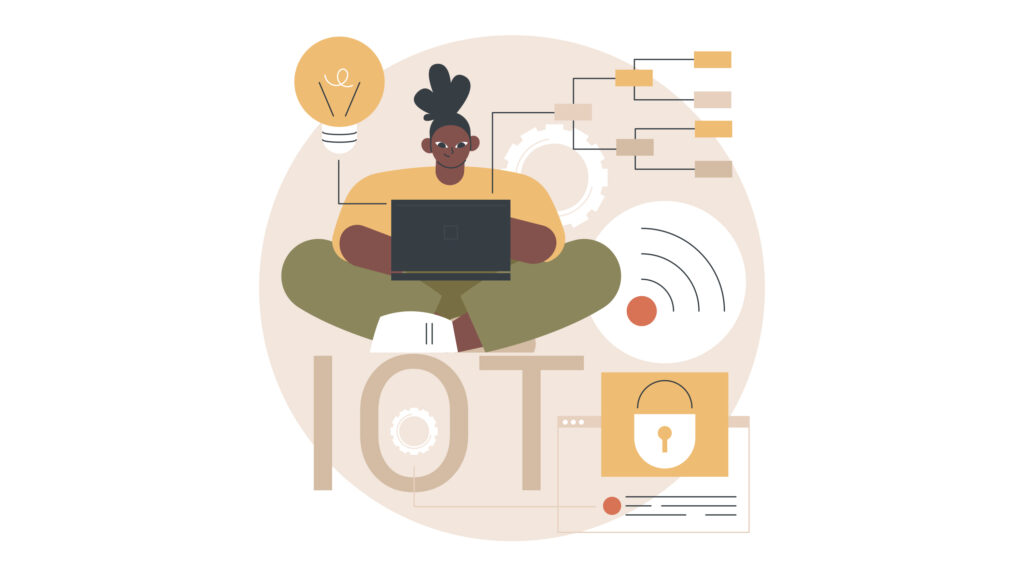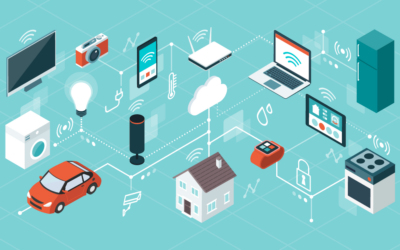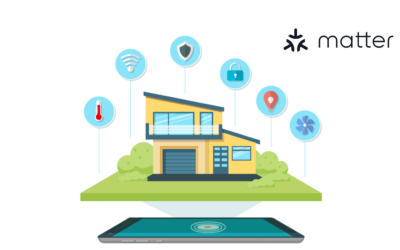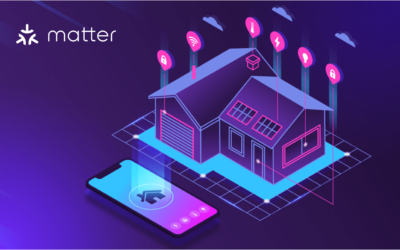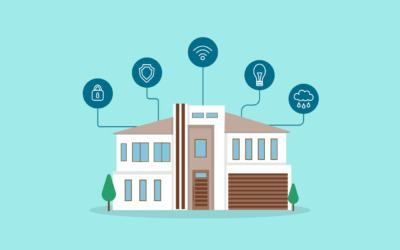Many products are evolving into connected devices, providing functionality to make our lives easier and more productive. The Internet of Things (IoT) is a network or ecosystem of physical objects connected to the Internet.
The IoT market is developing rapidly and offers connected products and services that bring new ways of living and working that consumer highly value. So, it is expected to have more than 49 billion devices by 2026, according to a report by Omdia.
What are IoT Devices?
IoT devices are electronic devices equipped with embedded sensors or actuators that convert energy from one form to another and connect through network interfaces (Bluetooth, WI-FI, Ethernet, etc) and APIs to interact with the physical world.
IoT devices also connect with other devices or systems and have unique attributes and computing capabilities that equip them to perform specific tasks and functionality (like remote monitoring, configuration, and troubleshooting).
Beyond just interaction, IoT devices can gather, analyze, and utilize data for decision-making. They can modify physical environments or predict outcomes, demonstrating their immense potential in various fields.
Introduction to IoT Cybersecurity
As the adoption of IoT devices continues to surge, their inherently connected nature exponentially increases the attack surface for hackers. These devices often have limited security features that compromise and use them to launch damaging attacks against unsuspecting customers. IoT cybersecurity is the principal factor affecting IoT adoption in consumer markets.
As IoT developers, we understand the importance of these cybersecurity capabilities. Our role involves helping our clients navigate the complexities of IoT cybersecurity, focusing on functionality and risk mitigation strategies, thereby contributing to their success.
IoT devices should be inherently equipped with user-friendly cybersecurity features. This is vital for preventing threats that could compromise their functionality and purpose. However, many users face significant challenges when implementing appropriate security measures in their environments, leaving them exposed to cyber threats.
IoT manufacturers are heavily responsible for ensuring that their products do not leave consumers vulnerable. Enhanced cybersecurity functionality in IoT devices simplifies users’ lives and significantly reduces the risk of device compromise and the possibility of these devices being used in cyber-attacks.
Planning for Secure IoT Development
Building secure IoT devices requires robust cybersecurity capabilities, technical features, and functionality that users can adapt to their environment and context.
Depending on the use case, IoT device manufacturers design features for managing risks and improving the security of their products. Developers perform certain activities during their IoT development processes to ensure devices are secure and meet customer expectations, while users also must take actions to mitigate risks.
Developing IoT devices requires planning several tasks to create cybersecurity capabilities during the early stages to avoid additional costs, complexity, or delays in release. Also, IoT device manufacturers must provide services such as firmware updates, vulnerability fixes, and support information to users.
Building a team of skilled IoT engineers is a critical consideration for designing secure devices, so they can make the correct software and hardware decisions and implement cybersecurity measures in IoT devices.
Customers purchase IoT devices to satisfy various needs, from enhancing home security to improving productivity and achieving their personal or professional goals.
Use Case Definition
Identify and define the expected use cases and potential customers. Outlining the various scenarios in which the product will be used, dependencies, potential vulnerabilities, and other aspects. This ensures appropriate cybersecurity for the expected use case and shapes the overall design and functionality of the IoT device.
Understanding your Customers Needs, Wants, and Expectations
Evaluate user needs to aid in determining the cybersecurity capabilities and design requirements (software and hardware) in the initial stages or during the Proof of Concept (PoC). Understanding customer cybersecurity needs and goals is essential for IoT manufacturers to develop secure and compliant IoT devices.
- Enhancing Security: To understand the unique risks each customer, system, and IoT device face and ensure the IoT devices are minimally securable by those who acquire and use them.
- Meeting Expectations: To align with customer expectations about device security capabilities and help them achieve their cybersecurity goals. This enhances user trust and device usability.
- Ensuring Compliance: Different sectors may have specific regulatory or legal requirements around cybersecurity. By understanding these, manufacturers can ensure their devices are compliant.
- Operational Continuity: To ensure device functions continue to operate even during a degraded cybersecurity state or network outage, considering the operational or environmental characteristics of the device.
- Protecting Data: To ensure the confidentiality, integrity, and availability of data collected by, stored on, processed by, or transmitted from the IoT device.
- Building Trust: To allow customers to trust the device’s cybersecurity measures, especially in cases where data protection is critical.
- Managing Complexities: To navigate the complexities introduced by IoT devices interacting with other devices, systems, and environments. This helps prevent risks and ensures seamless device operation.
IoT manufacturers help customers of IoT devices to achieve their goals by providing built–in technical capabilities and other means through related devices, other systems, and services, or non-technical means. In addition, they provide technical means through software and hardware implementations, data protection, identity authentication, data validation, and software update capabilities.
All these premarket activities are essential at the initial stages of product development. Using the NISTIR 8259A as a starting point and adapting them to your IoT device-specific profile considering your customer, use case, industry, and contextual factors.
Determine IoT Device Vulnerabilities
Identify IoT device vulnerabilities and the different types of attacks or corresponding attack tactics and work with IoT baseline criteria to design capabilities and functionality to mitigate associated risks. Considering flexibility for addressing your needs with the evolving technologies and customization based on its use case context.
Explore IoT cybersecurity capabilities, procedures, methods, and technical means devices employ to ensure security. Review the baseline set of device cybersecurity capabilities in the NISTIR 8259A publication as a guide and starting point. Also, consider adapting to baseline requirements from ETSI EN 303 645.
Customer Support and Communications
IoT manufacturers must provide resources to support cybersecurity capabilities and develop secure practices, responses, and remediation actions. Also, create communication mechanisms for informing users about IoT cybersecurity risks and measures in case of attacks. Decide on which information to communicate, services to maintain the device, software updates, cybersecurity capabilities offered by the device, risk-related assumptions, lifespan, support terms, etc.
To effectively support customers, manufacturers should not only focus on providing specific IoT device cybersecurity features but also extend support beyond these features, ensuring adequate allocation of computing resources to maintain and enhance the cybersecurity capabilities of the device.
- Hardware Resources
- Processing Power
- Memory
- Storage
- Network Technology
- Power
- Software Resources
- Encryption
- Operating System
- IP networks
Moreover, manufacturers need to plan for future support and lifespan of their devices. This might mean updating encryption algorithms or key lengths during the device’s lifecycle or even leveraging existing IoT platforms that are adequately secure and sufficiently resourced to expedite the IoT application development process.
Regarding cybersecurity, manufacturers may need to decide whether to incorporate hardware-based security capabilities, such as a hardware root of trust. They also need to identify unnecessary device capabilities that could pose cybersecurity risks and disable them if possible.
Lastly, manufacturers should adopt appropriate secure IoT development practices to support customer needs and goals further. These could include protecting IoT device code from unauthorized access and tampering, enabling customers to verify hardware or software integrity, verifying the security of third-party software used in the IoT device, minimizing vulnerabilities in released IoT device software, and establishing processes to address reported software vulnerabilities and prioritize their remediation.
At Krasamo, we ensure our clients understand the importance of creating proactive and clear communication to support customers of IoT devices after they start using the products. They must communicate about IoT device security risks, support their needs, and guide them to keep their devices secure throughout their lifecycle. This clear communication about vulnerabilities, updates, expected device life span, and responsibilities can enhance device security, customer trust, and satisfaction.
Identify and Address IoT Cybersecurity Risk Areas
Ensuring the security of IoT devices is of utmost importance to consumers, regardless of whether they know how to mitigate risks. Consumers naturally want their IoT devices to function as expected and to be protected from cyber threats. IoT manufacturers can help consumers meet these goals by identifying and addressing certain risk mitigation areas, offering increased security.
IoT device manufacturers build cybersecurity capabilities by addressing the following aspects or mitigation areas, helping consumers have a secure and pleasant experience.
- Asset Management: Keeping an accurate inventory of all IoT devices and their relevant characteristics across the devices’ lifecycles can be beneficial for managing cybersecurity risks. It is necessary to distinguish each IoT device from others to effectively manage vulnerabilities, access, data protection, and incident detection.
- Vulnerability Management: Identifying and mitigating known software vulnerabilities in IoT devices is crucial. Such vulnerabilities can be mitigated by installing updates and modifying configuration settings, improving device reliability, performance, and other operational aspects.
- Access Management: It’s vital to prevent unauthorized physical and logical access to IoT devices. By limiting access to interfaces, the device’s attack surface is reduced, and potential attacks are curbed.
- Data Protection: Protecting data, whether at rest or in transit, from unauthorized access and tampering ensures sensitive information isn’t exposed, and operations of the IoT device aren’t disrupted.
- Incident Detection: Constant monitoring and analyzing IoT device activity can provide early signs of security incidents. These insights can also aid in investigating compromises and troubleshooting operational issues.
By addressing these areas, IoT manufacturers can enhance their devices’ security and help consumers mitigate risks and meet their cybersecurity goals.
Krasamo — An IoT Development Company
Are you interested in developing IoT products? We are ready to guide you throughout the complex world of IoT Security.
With over 12 years of experience in IoT, our expert IoT developers can help you create devices that meet the highest security standards.
Contact us to discuss the importance of early planning for cybersecurity in the product development lifecycle, tailored to your customer base and offering, creating an IoT use case, understanding customer needs, identifying potential vulnerabilities, and providing support to help manage cybersecurity risks.
Learn more about Matter Certification and the U.S. Cyber Trust Mark and how our teams can help you navigate the certification processes.

